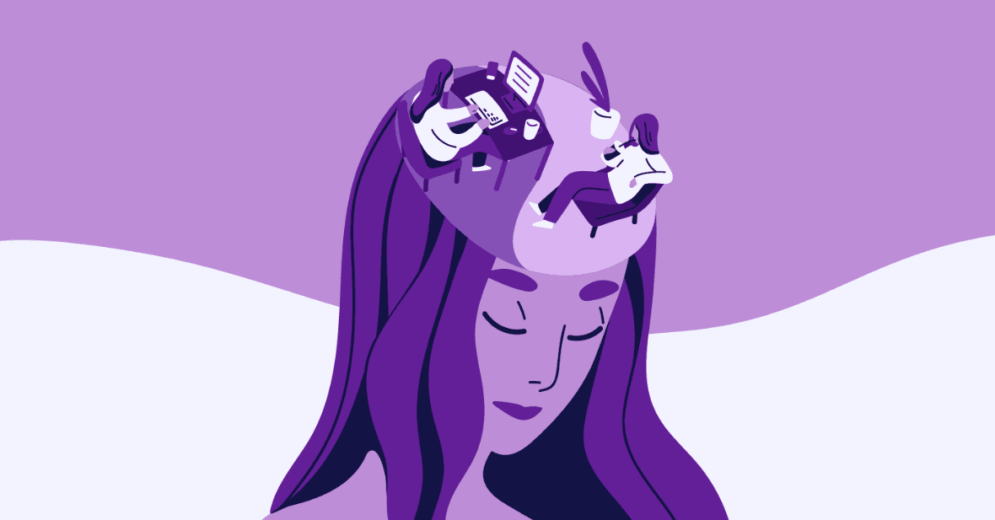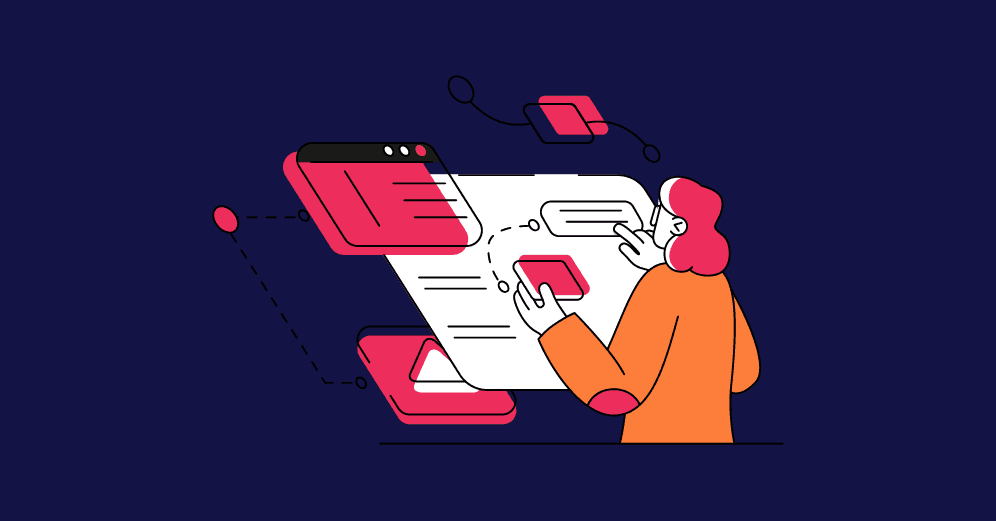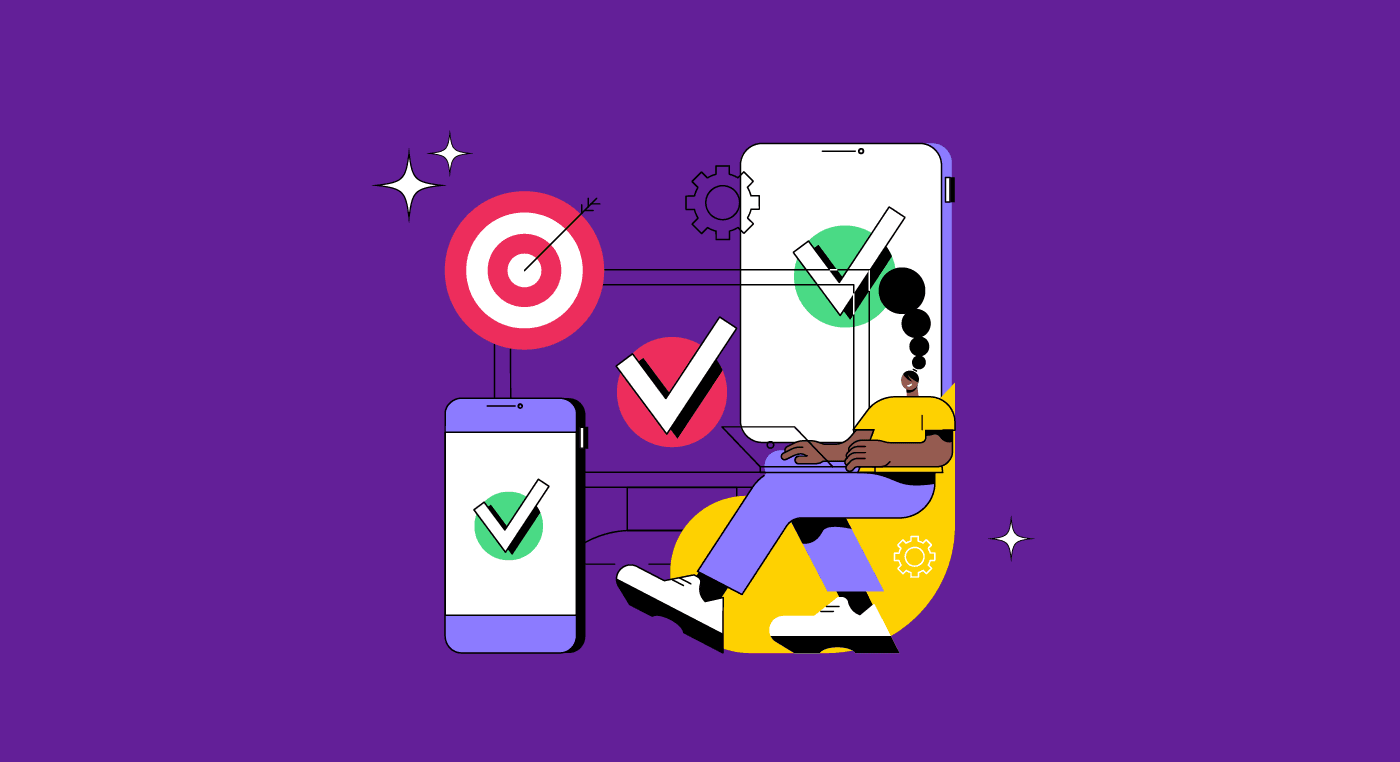Did you know that behavior and cognition, fields of study in psychology, are important for the success of a UX project?
Think about the following situation: you have spent a lot of time developing your product, so you're counting that it will be a success, right? It is different and innovative, and there is nothing the user can't like about it! It's perfect. And it is with this mindset that you put another project on the market, expecting a positive impact.
However, the following research indicates that the users don't know how to use the product. Their interaction is not positive, the User Journey has many problems, and some expected behaviors just don't happen.
What went wrong? Why didn't people behave and use the product as they should? The answer to these questions may lie in another area besides UX: psychology.
That's right! Stay with us in this article as we better explain these concepts and how psychology can benefit you, UX Designer!
What does psychology study?
Psychology is a science that aims – to put it simply – to study the mind and how it influences people's behavior.
According to the APA (American Psychological Association), the science of psychology:
"Benefits society and enhances our lives. Psychologists examine the relationships between brain function and behavior, and the environment and behavior, applying what they learn to illuminate our understanding and improve the world around us." – APA website
For a long time, psychology was contemplated within philosophy. Some philosophers, such as Socrates, Plato, Aristotle, and Descartes, even had some thoughts on the subject.
It was only in 1870 that psychology became an independent science, starting with the studies of the German Wilhelm Wundt.
From then on, psychology studies gained advances, and several branches emerged.
Reading Tip: Social Media And Our Mental Health
Branches of psychology
Psychology has several categories of study within itself, for example:
- Clinical Psychology;
- Developmental Psychology;
- Health Psychology;
- Social Psychology;
- Occupational Psychology;
- Cognitive Psychology;
- Behavioral Psychology.
When we talk about UX Design, the two categories of psychology that apply to the area are Cognitive and Behavioral.
But what is it about these studies that benefit UX Design and the way it develops products and interactions?
How does cognitive psychology relate to UX Design?
Cognitive Psychology is the field of study that focuses on cognition and thought processes.
In other words, it covers subjects such as attention, memory, perception, language, and decision-making.
With this, we can already see that the issues addressed by cognitive psychology are quite related to UX Design concepts. Let's go through some of them!
Perception

Perception is how we capture and interpret information from the environment through our senses – sight, smell, hearing, touch, and taste. Our sensory structures are the basis for building our views and understanding of the world.
Perception is also linked to attention, which deals with the prioritization our brain provides when faced with various stimuli.
Products – applications, websites, or software – must catch the user's attention through sensory stimuli like colors, sizes of icons, and typography.
In addition, it is essential that the design makes sense from the point of view of its structure and organization. The human mind works to recognize patterns, and each pattern must "make sense" to the user.
For example, the organization and arrangement of a certain group of clickable links in an application must make sense so that the user recognizes this arrangement as a pattern and can use it intuitively several times.
In this case, it is also important to define patterns so that the user can memorize how to interact with the application. Memory is also very important in UX!
Reading Tip: Typography in UI: How To Enhance User Experience
Memory

Memory is our ability to store and record information already processed by our mind. Also, it's the ability to retrieve this information whenever we want, if under normal health conditions.
In UX Design, the subject of memory is crucial. It works with the possibility of the users remembering or not the information or the way they interact with the interface.
UX Design projects must take into account the user's ability to remember. This does not mean that it is necessary to develop unforgettable products. But it's important to identify in which moments the user may need help to remember, for example, how to fill out a form.
Memory has 3 types of mental models:
- Sensory memory (snapshot): this is the memory of the instant. It has a very short duration (less than 1 second) and a very limited capacity to store information;
- Short-term memory (temporary buffer): also known as primary memory. It generally expires after 30 seconds. It still has a limited storage capacity, but it's larger than the sensory memory;
- Long-term memory (permanent store): the duration is unlimited, as is the capacity of what it stores.
Language

Language is the way we receive, interpret and convey information. We do this through symbols, with the environment, and with other people.
It’s also directly related to cognition and thought and is one of the most striking characteristics of human beings.
For UX Design, language is important because the communication made with the user must be clear. You must consider who your user is, where they live, how old they are, etc.
In this way, the language must relate to who interacts with the UI.
In this regard, language communication with the user means all the text forms a product offers, like menus, buttons, or forms.
We can also say that language is not limited to text as we know it. It's possible to use symbols that are part of the product's identity. As long as these symbols are clear and understood by the user, their application in projects is totally possible!
The language helps the user to understand what kind of interaction is expected at a given moment. It also makes clear the need for some action or decision-making.
Reading Tip: Redesign: Are You Sure About It?
Thought
By definition, every living thing with a nervous system also has some thought structure. Thinking is the ability to interpret, organize, and relate concepts and information. It's important because it is through thinking that we can make decisions and solve problems.
But how does this relate to UX Design?
If thinking means relating concepts to making a decision, UX Design needs to develop its products so that everything is favorable for the user to make the decision they want.
This concept is in line with User-Centered Design, in which the focus on the user is what determines how the product will be designed. This way, the user will have the best experience possible and will make the decision to continue using your interface or another just as important one.
We saw that cognitive psychology brings concepts and studies about the human mind and how it relates to emotions and the environment. But there is also the part of psychology that studies behavior. And this field is also essential for UX Design!
Behavioral Psychology and UX Design

Behavioral psychology is based on the concepts of behaviorism created by Edward L. Thorndike and John Watson.
Basically, this field of psychology says that it's possible to induce people – or even animals – to perform certain behaviors by subjecting them to certain stimuli.
In UX, this means that employing small stimuli within your interface makes it possible to ensure that the user behaves as expected. Behavior, in this case, means filling out a form completely, using the features of an application correctly, or even creating a new consumption habit.
The theory of behavioral psychology indicates 4 types of operant conditioning:
- Positive reinforcement: behaviors reinforced by the addition of stimuli;
- Negative reinforcement: behaviors reinforced by the subtraction of stimuli;
- Positive punishment: behaviors discouraged by the addition of stimuli;
- Negative punishment: behaviors discouraged by the subtraction of stimuli.
Therefore, when developing UIs, it's important to consider what behavior is expected from the user and what can be done to reinforce it.
For example: if the user is expected to fill out all the fields in a form, you should indicate in some way that all the fields are mandatory. This action is an example of positive reinforcement.
This way, you can ensure that the form is filled out correctly and the user has a better experience, free from error messages.
Reading Tip: User Journey Map: Understanding and Improving Interactions
Conclusion
The relationship between UX Design and psychology is very close. After all, users are human beings with cognitive and behavioral patterns.
Thus, it is critical to understand the concepts of psychology covered in this article to develop products and interfaces that guarantee an amazing user experience.
Psychology provides indispensable tools and insights to understand your users better and how they interact with your product.
We have already mentioned in many other articles that UX Design is a multidisciplinary area. Therefore, understanding other areas and concepts is a great asset for you as a professional.








